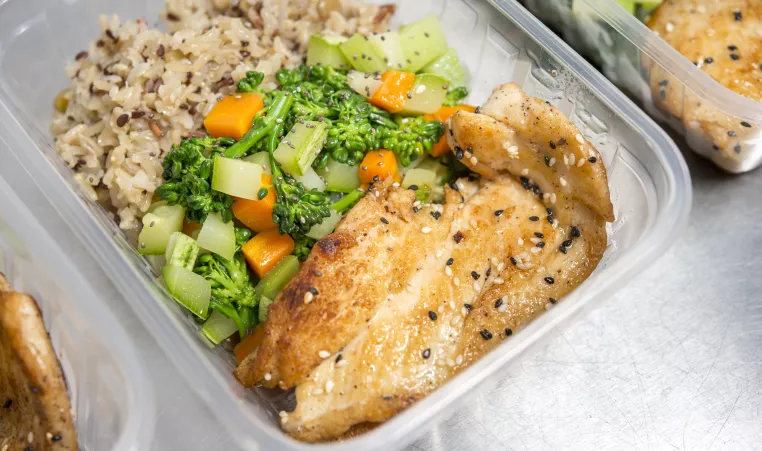
Meal prep doesn’t have to be an all day, intimidating nightmare. There are ways to keep it simple, efficient, and easy – especially if you’re trying to focus on being healthier through nutrition. Meal prep saves you time, stress, and money while reducing waste, helping you manage portions and calories, and keeping kitchen chaos at a minimum.
Here are some basic, no-fail meal prep strategies to make it easy, efficient, effective, and build your confidence without spending hours shopping or in the kitchen!
What Works Well for Meal Prep?
Let’s start with what type of food work best for meal prepping. Here’s a quick list to help:
- cooked grains, pasta, and beans
- cooked proteins (like meats, seafood, tofu, and poultry)
- hardboiled eggs
- roasted vegetables
- heartier vegetables (like celery, carrots, peas, bell peppers, kale, broccoli, and cabbage)
- whole fruits (like apples, citrus, grapes, peaches, pears, and nectarines)
- nuts and seeds
- cheese and dairy
- sauces, condiments, dressings, and dips
- snacks
- smoothie blender packs
How to Start?
Start small. Choose one recipe, one meal, or one snack. You could also choose two recipes that use a lot of the same ingredients. In choosing your recipe, focus on balancing your plate so that each portion has lean protein, complex carbs (whole grains, starchy veggies or fruit), a heart-healthy added fat, and a non-starchy veggie all in one. Balanced meals keep you fuller longer, blood sugar stable, cravings at bay, and provide lots of vitamins, minerals, and fiber.
Consider prepping enough for about three days. Use this formula where you simply plug in foods, and season with all kinds of herbs, spices, and low-sodium, low-sugar sauces and/or condiments:
- Basic: Lean Protein + Whole Grain (complex carb) + Non-Starchy Vegetable + Healthy Fat
- Vegetarian: Legumes + Whole Grain + Starchy and Non-Starchy Vegetables + Healthy Fat
The supplies you use are just as important as the ingredients. Glass, metal, and reusable, BPA-free plastic containers and baggies of various shapes and sizes will help you portion and store your meals and snacks. Consider items that can go from freezer to dishwasher to microwave. Some have pre-divided sections into portions and separate items. Small 1-2-ounce, leak-proof containers are great for dips, nut butters, condiments, and salad dressings!
Getting Started!
Now that we have the basics of what to include – and what to pack them in – let’s get started with our meal prep! Here are five steps to follow:
- PLAN: Chose the meal or snack and the items and determine how much time and effort is needed to prep, cook, and portion.
- TAKE STOCK AND SHOP: Take stock of your supplies to see what you already have in your pantry, fridge, and freezer. Then make your list. Don’t forget that canned and frozen items, as well as pre-cooked proteins, are nutritious, easy, and budget-friendly foods!
- PREP, COOK, AND PORTION: Cut, marinate, and grill or roast meats and proteins. Batch cook pasta, beans, and grains. Chop veggies along with some fruits that can last a few days. Portion dips, nut butters, condiments, and salad dressings. Roast veggies on large baking sheets in bigger batches. Portion salads with proteins, veggies, nuts, and seeds into ready-to-go bowls or jars, and pair them with dressing containers.
- LABEL AND STORE: Label items with name and date, then store them in the fridge to be eaten or in the freezer for later.
- CELEBRATE: Now you’ve got several days’ worth of healthy and nutritious meals and snacks to grab and go so enjoy your efforts!
Content provided by Melissia Schmidt, PN2-MHC, a Group Exercise Instructor at the Schottland and Westside Family YMCAs.